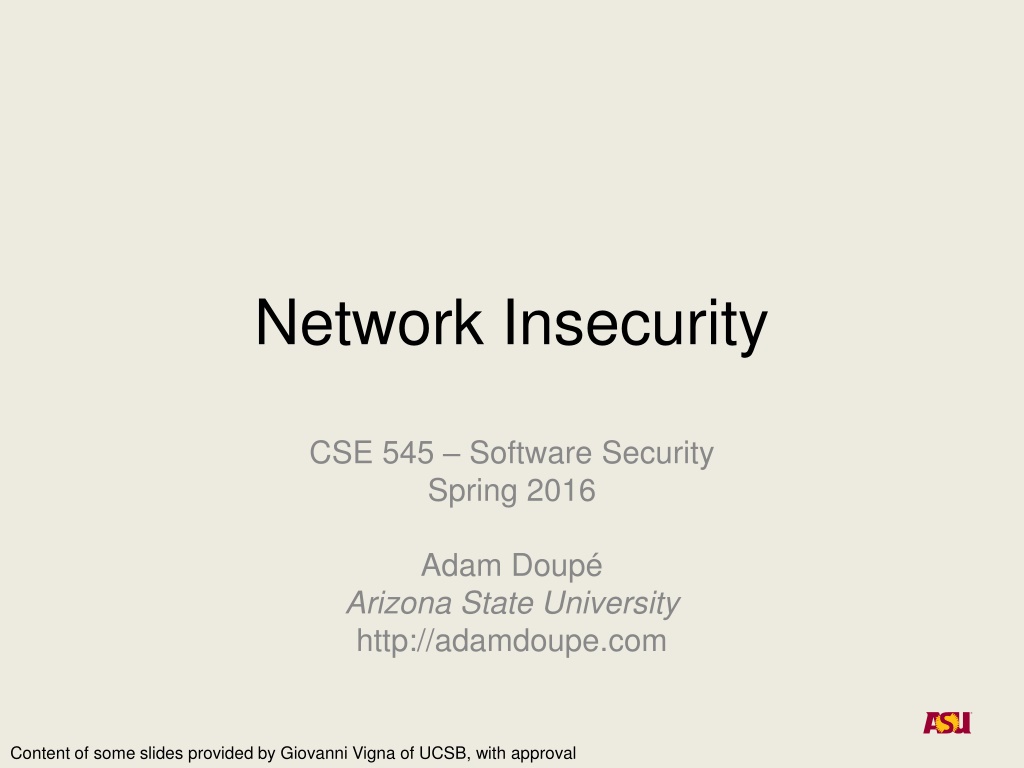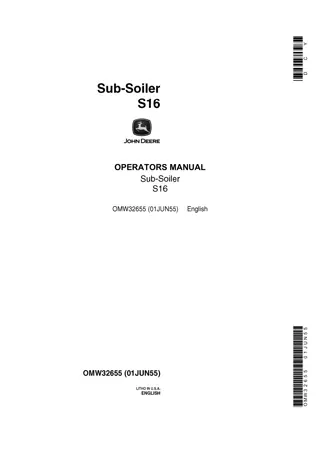
Understanding TCP/IP Networking Fundamentals
Explore the basics of TCP/IP networking including the Internet Protocol Suite, IP addressing, CIDR, and the crucial role of the IP protocol in providing connectivity across the Internet. Learn about network layering, protocols, and more in this informative content.
Uploaded on | 0 Views
Download Presentation

Please find below an Image/Link to download the presentation.
The content on the website is provided AS IS for your information and personal use only. It may not be sold, licensed, or shared on other websites without obtaining consent from the author. If you encounter any issues during the download, it is possible that the publisher has removed the file from their server.
You are allowed to download the files provided on this website for personal or commercial use, subject to the condition that they are used lawfully. All files are the property of their respective owners.
The content on the website is provided AS IS for your information and personal use only. It may not be sold, licensed, or shared on other websites without obtaining consent from the author.
E N D
Presentation Transcript
Network Insecurity CSE 545 Software Security Spring 2016 Adam Doup Arizona State University http://adamdoupe.com Content of some slides provided by Giovanni Vigna of UCSB, with approval
The Internet Protocol Suite Set of protocols used to transport data between nodes of a network Also known as the TCP/IP Protocol Suite Based on abstraction and encapsulation Link protocols Internet protocols Transport protocols Application protocols Adam Doup , Software Security
TCP/IP Layering SMTP HTTP DNS NFS Application Transport TCP UDP IGMP IP ICMP Internet ARP RARP Hardware Interface Link Physical Layer
IP Addresses Each host has one or more IP addresses for each network interface IPv4 addresses are composed of 32 bits (class+netid+hostid) Represented in dotted-decimal notation: 149.169.175.207 Classes Class A (0): netid=7 bit (128 networks, actually 1-126), hostid=24 bit (16777216 hosts) Class B (10): netid=14 bit (16384 networks), hostid=16 bit (65536 hosts) Class C (110): netid=21 bit (2097152 networks), hostid=8 bit (256 hosts) Class D - Multicast (1110): multicast addresses Class E (1111): reserved or future use Adam Doup , Software Security
Classless Inter-Domain Routing (CIDR) Allocation of large chunks of IP addresses wasted an enormous number of IP addresses Number of hosts is increasing IPv6 provides a larger address space but adoption is slow CIDR is an addressing scheme from 1993 for the Internet which allows for more efficient allocation of IP addresses than the old Class A, B, and C address scheme The netid/hostid boundary can be placed on any bit between 13 and 27 32 hosts minimum 524,288 hosts maximum Adam Doup , Software Security
Internet Protocol (IP) The IP protocol represents the glue of the Internet The IP protocol provides a connectionless, unreliable, best-effort datagram delivery service (delivery, integrity, ordering, non-duplication, and bandwidth is not guaranteed) IP datagrams can be exchanged between any two nodes (provided they both have an IP address) For direct communication IP relies on a number of different lower-level protocols, e.g., Ethernet, Token Ring, FDDI, RS-232, 802.11 Adam Doup , Software Security
IP Datagram RFC 791 0 4 8 12 16 20 24 28 31 Version HL Service type (TOS) Identifier Protocol Total length Flags Fragment offset Time To Live Header checksum Source IP address Destination IP address Options Padding Data Adam Doup , Software Security
IP Header Normal size: 20 bytes Version (4 bits): current value=4 (IPv4) Header length (4 bits): number of 32-bit words in the header, including options (max header size is 60 bytes) Type of service (8 bits): priority (3 bits), quality of service (4 bits), and an unused bit Total length (16 bits): datagram length in bytes (max size is 65535 bytes) Id (16 bits): unique identifier for the datagram (usually incremented by one) Adam Doup , Software Security
IP Header Flags (3 bits) and offset (13 bits): used for fragmentation Time To Live (8 bits): specifies the max number of hops in the delivery process Protocol (8 bits): specifies the protocol encapsulated in the datagram data (e.g., TCP or UDP) Header checksum (16 bits): checksum calculated over the IP header Addresses (32+32 bits): IP addresses of the source and destination of the datagram Adam Doup , Software Security
IP Options Variable length Identified by first byte Security and handling restrictions: used in military applications Record route: each router records its IP address Time stamp: each router records its IP address and time Source route: specifies a list of IP addresses that must be traversed by the datagram Many others Adam Doup , Software Security
IP Encapsulation IP header IP data Frame header Frame data
IP: Direct Delivery If two hosts are in the same physical network the IP datagram is encapsulated in a lower level protocol and delivered directly Subnetwork111.10.20 111.10.20.121 From 111.10.20.121 To111.10.20.14 111.10.20.14 From 09:45:FA:07:22:23 To0A:12:33:B2:C4:11 09:45:FA:07:22:23 0A:12:33:B2:C4:11 Adam Doup , Software Security
Ethernet Frame dest (6) src (6) type (2) data (46-1500) CRC (4) 0x0800 IP datagram 0x0806 ARP (28) PAD (18) 0x0808 RARP (28) PAD (18)
Ethernet Widely-used link-layer protocol Uses CSMA/CD (Carrier Sense, Multiple Access with Collision Detection) Destination address: 48 bits (e.g., 09:45:FA:07:22:23) Source address: 48 bits Type: 2 bytes (IP, ARP, RARP) Data: Min 46 bytes (padding may be needed) Max 1500 bytes CRC: Cyclic Redundancy Check, 4 bytes Adam Doup , Software Security
Address Resolution Protocol The address resolution protocol (ARP) allows a host to map IP addresses to the link-level addresses associated with the peer s hardware interface (e.g., Ethernet) to be used in direct delivery ARP messages are encapsulated in the underlying link level protocol Adam Doup , Software Security
Address Resolution Protocol Host A wants to know the hardware address associated with the IP address of host B Host A broadcasts a special message to all the hosts on the same physical link Host B answers with a message containing its own link-level address Host A keeps the answer in its cache To optimize traffic exchange, when host A sends its request it also includes its own IP address The receiver of the ARP request will cache the requester mapping Adam Doup , Software Security
ARP Messages Hw type Prot type Hw size Prot size Op Sender Ether Sender IP Target Ether Target IP Hardware (2 bytes), protocol (2 bytes), hardware size (1 byte), and protocol size (1 byte) specify the link and network addresses to be mapped (usually Ethernet and IP, respectively) [0x0001, 0x0800, 6, 4] OP field specifies if this is an ARP request or an ARP reply (1= ARP request, 2=ARP reply) Sender Ethernet/IP: data of the requester Target Ethernet: empty in a request Target IP: requested IP address Adam Doup , Software Security
ARP Request hosta# arp -a hosta# ping 192.168.1.10 8:0:46:7:4:a3 ff:ff:ff:ff:ff:ff arp 60: arp who-has 192.168.1.10 tell 192.168.1.100 0:1:3:1d:98:b8 8:0:46:7:4:a3 arp 60: arp reply 192.168.1.10 is-at 0:1:3:1d:98:b8 8:0:46:7:4:a3 0:1:3:1d:98:b8 ip 98: 192.168.1.100 > 192.168.1.10: icmp: echo request 0:1:3:1d:98:b8 8:0:46:7:4:a3 ip 98: 192.168.1.10 > 192.168.1.100: icmp: echo reply hosta# arp -a hostb (192.168.1.10) at 00:01:03:1D:98:B8 [ether] on eth0 hostb# arp -a hosta (192.168.1.100) at 08:00:46:07:04:A3 [ether] on eth0 ARP request ARP reply Host B 192.168.1.10 0:1:3:1d:98:b8 Host A 192.168.1.100 08:00:46:07:04:A3 Host C
Local Area Network Attacks Goals Impersonation of a host Denial of service Access to information Tampering with delivery mechanisms Sniffing Spoofing Hijacking Adam Doup , Software Security
Hubs vs. Switches Early network switches were simple hubs All traffic is broadcasted to all ports Modern network switches keep track of which interface is connected to each port All broadcast traffic is sent to all connected hosts All directed traffic is sent to the ports associated with the referenced hardware address Adam Doup , Software Security
Network Sniffing Technique at the basis of many attacks The attacker sets his/her network interface in promiscuous mode If switched Ethernet is used, then the switch must be convinced that a copy of the traffic needs to be sent to the port of the sniffing host Adam Doup , Software Security
Why Sniffing? Many protocols (FTP, POP, HTTP, IMAP) transfer authentication information in the clear By sniffing the traffic it is possible to collect usernames/passwords, files, mail, etc. Usually traffic is copied to a file for later analysis Adam Doup , Software Security
Sniffing Tools Tools to collect, analyze, and reply traffic Routinely used for traffic analysis and troubleshooting Command-line tools tcpdump: collects traffic tcpflow: reassemblesTCP flows tcpreplay: re-sends recorded traffic Graphical tools Wireshark Supports TCP reassembling Provides parsers for a number of protocols Adam Doup , Software Security
TCPDump: Understanding the Network TCPDump is a tool that analyzes the traffic on a network segment One of the most used/most useful tools Based on libpcap, which provides a platform- independent library and API to perform traffic sniffing Allows one to specify an expression that defines which packets have to be printed Requires root privileges to be able to set the interface to promiscuous mode (privileges not needed when reading from file) Adam Doup , Software Security
TCPDump: Options -e: print link-level addresses -n: do not translate IP addresses to FQDN names -x: print each packet in hex -i: use a particular network interface -r: read packets from a file -w: write packets to a file -s: specify the amount of data to be sniffed for each packet (e.g., set to 65535 to get the entire IP packet) -f: specify a file containing the filter expression Adam Doup , Software Security
TCPDump: Filter Expression A filter expression consists of one or more primitives Primitives are composed of a qualifier and an id Qualifiers type: defines the kind of entity host (e.g., host errol , where errol is the id) net (e.g., net 128.111 ) port (e.g., port 23 ) dir: specifies the direction of traffic src (e.g., src host errol ) dst src and dst Adam Doup , Software Security
TCPDump: Filter Expression Qualifiers (continued) proto: specifies a protocol of interest ether (e.g., ether src host 00:65:FB:A6:11:15 ) ip (e.g., ip dst net 192.168.1 ) arp (e.g., arp ) rarp (e.g., rarp src host 192.168.1.100 ) Operators can be used to create complex filter expression and, or, not (e.g., host hedwig and not port ssh ) Special keywords gateway: checks if a packet used a host as a gateway less and greater: used to check the size of a packet broadcast: used to check if a packet is a broadcast packet Adam Doup , Software Security
TCPDump: Filter Expression Other operators Relational: <, >, >=, <=, =, != Binary: +, -, *, /, &, | Logical: and, or, not not host errol and dst host 192.168.1.1 Access to packet data proto [ expr : size] where expr is the byte offset and size is an optional indicator of the number of bytes if interest (1, 2, or 4) ip[0] & 0xf != 5 to filter only IP datagrams with options Adam Doup , Software Security
TCPDump: Examples # tcpdump -i eth0 -n -x # tcpdump -s 65535 -w traffic.dump src host hitchcock $ tcpdump -r traffic.dump arp # tcpdump arp[7] = 1 # tcpdump gateway csgw and \( port 21 or port 20 \) Adam Doup , Software Security
Libpcap Library to build sniffers in C pcap_lookupdev looks up a device pcap_open_live opens a device and returns a handle pcap_open_offline and pcap_dump_open read from and save packets to files pcap_compile and pcap_setfilter set a tcpdump-like filter pcap_loop register a callback to be invoked for each received packet Adam Doup , Software Security
Packet Structure Header is returned in structure struct pcap_pkthdr { struct timeval ts; /* time stamp */ bpf_u_int32 caplen; /* length of portion */ bpf_u_int32 len; /* length this packet (off wire) */ }; The actual packet is returned as a pointer to memory Packet can be parsed by casting it with protocol-specific structs Whenever dealing with packets take into account endianness Use ntohs, htons, ntohl, htonl Adam Doup , Software Security
Switched Environments Switched Ethernet does not allow direct sniffing MAC flooding Switches maintain a table with MAC address/port mappings In some cases, flooding the switch with bogus MAC addresses will overflow the table s memory and revert the behavior from switch to hub MAC duplicating/cloning Attacker reconfigures his/her host to have the same MAC address as the target machine The switch will record this in its table and send the traffic to the attacker machine (or possibly both) ARP spoofing with forwarding can be used to bypass this protection Adam Doup , Software Security
ARP Spoofing Goal: sniff all traffic between two hosts in a switched environment The attack leverages the stateless nature of the ARP protocol Replies without a request will be accepted The attacker host sends spoofed ARP messages to the two victim hosts, poisoning their cache The victim host sends their IP packets to the attacker host The attacker host acts has a router Adam Doup , Software Security
ARP Spoofing Host A Host B 192.168.1.100 at 08:00:46:07:04:A3 192.168.1.10 at 00:01:03:1d:98:b8 Host C 192.168.1.100 08:00:46:07:04:A3 192.168.1.10 00:01:03:1D:98:B8 192.168.1.137 at BA:DB:AD:BA:DB:AD 192.168.1.100 08:00:46:07:04:A3 192.168.1.10 00:01:03:1D:98:B8
ARP Spoofing ARP Reply: 192.168.1.10 is at BA:DB:AD:BA:DB:AD Host A Host B 192.168.1.100 at 08:00:46:07:04:A3 192.168.1.10 at 00:01:03:1d:98:b8 Host C 192.168.1.100 08:00:46:07:04:A3 192.168.1.10 00:01:03:1D:98:B8 192.168.1.137 at BA:DB:AD:BA:DB:AD 192.168.1.100 08:00:46:07:04:A3 192.168.1.10 00:01:03:1D:98:B8
ARP Spoofing ARP Reply: 192.168.1.10 is at BA:DB:AD:BA:DB:AD Host A Host B 192.168.1.100 at 08:00:46:07:04:A3 192.168.1.10 at 00:01:03:1d:98:b8 Host C 192.168.1.100 08:00:46:07:04:A3 192.168.1.10 BA:DB:AD:BA:DB:AD 192.168.1.137 at BA:DB:AD:BA:DB:AD 192.168.1.100 08:00:46:07:04:A3 192.168.1.10 00:01:03:1D:98:B8
ARP Spoofing ARP Reply: 192.168.1.100 is at BA:DB:AD:BA:DB:AD Host A Host B 192.168.1.100 at 08:00:46:07:04:A3 192.168.1.10 at 00:01:03:1d:98:b8 Host C 192.168.1.100 08:00:46:07:04:A3 192.168.1.10 BA:DB:AD:BA:DB:AD 192.168.1.137 at BA:DB:AD:BA:DB:AD 192.168.1.100 08:00:46:07:04:A3 192.168.1.10 00:01:03:1D:98:B8
ARP Spoofing ARP Reply: 192.168.1.100 is at BA:DB:AD:BA:DB:AD Host A Host B 192.168.1.100 at 08:00:46:07:04:A3 192.168.1.10 at 00:01:03:1d:98:b8 Host C 192.168.1.100 BA:DB:AD:BA:DB:AD 192.168.1.10 BA:DB:AD:BA:DB:AD 192.168.1.137 at BA:DB:AD:BA:DB:AD 192.168.1.100 08:00:46:07:04:A3 192.168.1.10 00:01:03:1D:98:B8
ARP Spoofing Ethernet: BA:DB:AD:BA:DB:AD IP: 192.168.1.100 Data: SECRET Host A Host B 192.168.1.100 at 08:00:46:07:04:A3 192.168.1.10 at 00:01:03:1d:98:b8 Host C 192.168.1.100 BA:DB:AD:BA:DB:AD 192.168.1.10 BA:DB:AD:BA:DB:AD 192.168.1.137 at BA:DB:AD:BA:DB:AD 192.168.1.100 08:00:46:07:04:A3 192.168.1.10 00:01:03:1D:98:B8
ARP Spoofing Ethernet: 00:01:03:1D:98:B8 IP: 192.168.1.10 Data: SECRET Host A Host B 192.168.1.100 at 08:00:46:07:04:A3 192.168.1.10 at 00:01:03:1d:98:b8 Host C 192.168.1.100 BA:DB:AD:BA:DB:AD 192.168.1.10 BA:DB:AD:BA:DB:AD 192.168.1.137 at BA:DB:AD:BA:DB:AD 192.168.1.100 08:00:46:07:04:A3 192.168.1.10 00:01:03:1D:98:B8
ARP Spoofing Legitimate ARP replies might restore the ARP cache to the correct value Most ARP-spoofing tool repeatedly send spoofed ARP replies to keep the ARP cache in the desired state Adam Doup , Software Security
Dsniff Collection of tools for network auditing and penetration testing dsniff, filesnarf, mailsnarf, msgsnarf, urlsnarf, and webspy passively monitor a network for interesting data (passwords, e-mail, files, etc.) arpspoof, dnsspoof, and macof facilitate the interception of network traffic normally unavailable to an attacker sshmitm and webmitm implement active man-in- the-middle attacks against redirected SSH and HTTPS Adam Doup , Software Security
Ettercap Tool for performing man-in-middle attacks in LANs Provides support for ARP spoofing attacks Provides support for the interception of SSH1 and SSL connections Support the collection of passwords for a number of protocols Adam Doup , Software Security
ARP Spoofing with Ettercap Define two groups hosts The cache of each host in one group will be poisoned with entries associated with hosts in the other group Group 1: 192.168.1.1 Group 2: 192.168.1.10-20 Set up IP forwarding (on linux) # echo 1 > /proc/sys/net/ipv4/ip_forwarding Start the poisoning # ettercap C o -M arp:remote /192.168.1.1/ /192.168.1.10-20/ Collect the traffic # tcpdump -i eth0 -s 0 -w dump.pcap Adam Doup , Software Security
ARP Defenses Static ARP entries The ARP cache can be configured to ignore dynamic updates Difficult to manage in large installation Could be used for a subset of critical addresses (e.g., DNS servers, gateways) Cache poisoning resistance Ignore unsolicited ARP replies (still vulnerable to hijacking) Update on timeout (limited usefulness) Monitor changes (e.g., arpwatch) Listen for ARP packets on a local Ethernet interface Keep track for Ethernet/IP address pairs Report suspicious activity and changes in mapping Adam Doup , Software Security
Detecting Sniffers on Your Network Sniffers are typically passive programs They put the network interface in promiscuous mode and listen for traffic They can be detected by programs that provide information on the status of a network interface (e.g., ifconfig) # ifconfig eth0 eth0 Link encap:Ethernet HWaddr 00:10:4B:E2:F6:4C inet addr:192.168.1.20 Bcast:192.168.1.255 Mask:255.255.255.0 UP BROADCAST RUNNING PROMISC MULTICAST MTU:1500 Metric:1 RX packets:1016 errors:0 dropped:0 overruns:0 frame:0 TX packets:209 errors:0 dropped:0 overruns:0 carrier:0 collisions:0 txqueuelen:100 A kernel-level rootkit can easily hide the presence of a sniffer Adam Doup , Software Security
Detecting Sniffers on Your Network Suspicious ARP activity ARP cache poisoning attacks are noisy Tools like arpwatch and XArp detect a variety of ARP attacks Suspicious DNS lookups Sniffer attempts to resolve names associated with IP addresses (may be part of normal operation) Trap: generate connection from fake IP address not in local network and detect attempt to resolve name Latency Assumption: Since the NIC is in promiscuous mode EVERY packet is processed Use ping to analyze response time of host A Generate huge amount of traffic to other hosts and analyze response time of host A Adam Doup , Software Security
Detecting Sniffers on Your Network Kernel behavior Linux When in promiscuous mode, some kernels will accept a packet that has the wrong Ethernet address but the right destination IP address If sending an ICMP request to a host using the wrong Ethernet address but the correct IP address causes an ICMP reply, the host is sniffing the network AntiSniff tool (written in 2000!) Covers some of the techniques above Uses TCP SYN and TCP handshake forged traffic to overload sniffer when testing latency Adam Doup , Software Security
Controlling Network Access Sniffing and hijacking attacks (e.g., ARP attacks) require physical access It is important to control who can access your network IEEE 802.1X is port-based access control protocol A supplicant (e.g., a laptop) connects to an authenticator (e.g., a switch) The supplicant has minimal traffic access until it presents the right credentials (through the authenticator) to an authentication server Protocol based on the Extensible Authentication Protocol (EAP) over LAN (EAPOL) Once the right credentials are provided network access will be granted Adam Doup , Software Security
IP Spoofing In an IP spoofing attack a host impersonates another host by sending a datagram with the address of the impersonated host as the source address Subnetwork111.10.20 111.10.20.121 From 111.10.20.76 To111.10.20.14 111.10.20.14 111.10.20.76 From 09:45:FA:07:22:23 To0A:12:33:B2:C4:11 09:45:FA:07:22:23 0A:12:33:B2:C4:11 Adam Doup , Software Security






















